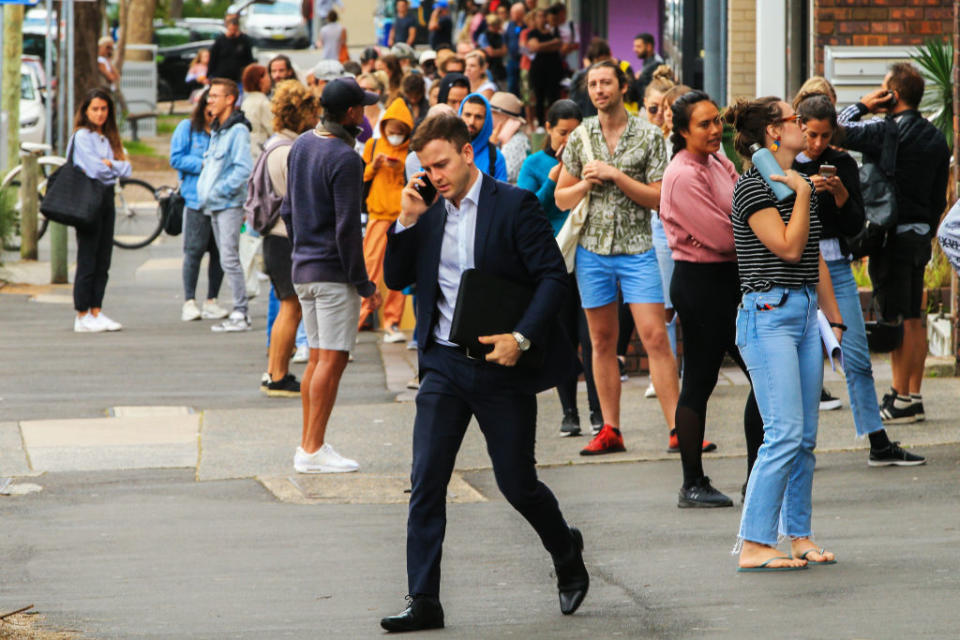The 2020 Covid-19 Depression has hit the jobs market

The reason why most decent economists are concerned about recessions is the mayhem and pain that results from a deterioration in the labour market when recessions hit.
Just four months from the escalation of COVID-19 in Australia and the evidence is in – the labour market is experiencing its deepest downturn since the 1930s Great Depression.
More from The Kouk: Huge changes expected in coronavirus recovery
More from The Kouk: House prices continue to rise – predictions of a 35% fall are in the bin
More from The Kouk: Stock market panic has turned into market euphoria: What's next?
The labour force data for May were an economic train wreck. Here is the snapshot - since February:
Employment has fallen by 838,000.
The number of people counted as unemployed has risen by 231,000.
The number of people underemployed has increased by 527,000.
The number of people who have dropped out of the labour market is 673,000.
Taken together, the proportion of the working age population ‘under-utilised’ is around 25 per cent. Treasury estimate the peak unemployment rate during the Great Depression was 19.9 per cent.
That is how bad things are in today’s economy.
Opening up will help a bit
As some of the restrictions on people movement, lockdowns and businesses are slowly unwound, the level of economic activity will increase. Some jobs will come back and some people will have their hours increased. This will be welcome news.
Unfortunately, the absence of policies to support and stimulate economic activity will keep the economy weaker for longer and limit the extent to which the labour market improves. Private sector demand is so weak that the government needs to have a policy suite that drives the economic and employment recovery.
The tourism, education, arts and entertainment sectors are still in deep trouble and are unlikely to recover any time soon, meaning jobs in these areas will be slow to come back.
Wages are weak
Making the economic pick up more problematic is the weakness of wages growth for those lucky enough to still be employed.
Many public service wages have been frozen and a substantial number of firms have imposed pay cuts for their staff.
Also read: Public sector wage freeze to cost 1,100 jobs
While this is understandable at a micro level and may help the budget bottom line and profits, it is likely to act as a handbrake on household income growth and therefore consumer spending.
The decision last week from the Fair Work Commission to limit the increase in the minimum wage to 1.75 per cent and to have if phased in across a number of sectors through to 2021 is another blow to household incomes.
Unless households borrow more or run down their savings, consumer spending and as a result employment, will be constrained by weak household income growth.
Let’s not forget self funded retirees
Rounding out the disconcerting news on the labour market and the economy more generally is the slump in the income of self funded retirees.
At the end of 2019, it was possible to get a 12 month term deposit interest rate of around 2 per cent. Not great but not too bad given the rise in the share market and high dividends being paid by many companies. The dividend yield on ASX stock was over 4 per cent, a return that for many was supplemented by franking credit payments from the government.
Today, it is difficult to get a term deposit much above 1.25 per cent and many companies have cut, deferred or cancelled their dividend payments due to the recession and hit to their bottom line.
Not only are dividends lower but the stock market fall has eroded the value of assets.
This suggests that for many self funded retirees, the investment income has fallen from around 4 per cent to around 2.5 per cent and their assets have fallen by 10 per cent or more.
For those with a hefty $1 million in their superannuation fund, for example, it means their income will be lucky to be $25,000 in the year ahead. For those with less than that, their incomes will be very low indeed. This section of the community is likely to cut their spending as a result.
Persistent high unemployment
The disconcerting news on the economy is likely to persist for an extended period of time.
Given the pandemic is only a few months old and the economy is still being severely constrained by the lockdowns, the weakness in the labour market could extend for many years.
Only a strong economy can generate the activity needed to rehire those currently out of work. And a strong economy, that sustains an expansion, unfortunately seems a long way away.
We should prepare for several years of severe labour market weakness.
Follow Yahoo Finance Australia on Facebook, Twitter, Instagram and LinkedIn.

 Yahoo Finance
Yahoo Finance 
